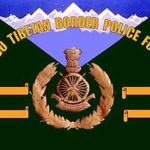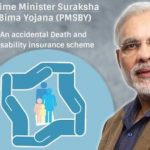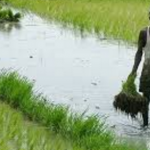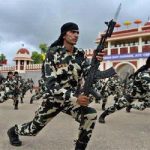Bangladesh War of Independence (Read in hindi)
- It was an independence war and revolution triggered by the rise of Bengali nationalists and the 1971 Bangladesh genocide.
- It is also known as Bangladesh Liberation War or Liberation War in Bangladesh.
- It began because of underestimation of Bangladesh (then East Pakistan) by Pakistan (then West Pakistan) in politics, military and etc.
- Political discontent and cultural nationalism in East Pakistan rose as on 25 March 1971, after an election won by an East Pakistani political party (the Awami League) was ignored by the ruling establishment.
- This rise was met by brutal suppressive force from the ruling elite of the West Pakistan establishment, in what came to be termed Operation Searchlight.
- This led to Awami League leader Sheikh Mujibur Rahman declaring East Pakistan’s independence as the state of Bangladesh on 26 March 1971.
- Pakistani President Agha Mohammed Yahya ordered the Pakistani military to restore the Pakistani government’s authority, beginning the civil war.
- The war is also known to lead almost 10 million refugees flooding into the eastern provinces of India.
- The war finally resulted in the independence of the People’s Republic of Bangladesh.
India’s Involvement in the War
- The Pakistan army conducted a widespread genocide in whole East Pakistan.
- The refugees took shelter in neighbouring states of India placing an intolerable strain on India’s already overburdened economy.
- Prime Minister Indira Gandhi had concluded that instead of taking in millions of refugees, it was economical to go to war against Pakistan.
- Hostile relations in the past between India and Pakistan added to India’s decision to intervene in Pakistan’s civil war.
- Resultantly, the Indian government decided to support the creation of a separate state for ethnic Bengalis by supporting the Mukti Bahini.
- Thus, wary of the growing involvement of India, the Pakistan Air Force (PAF) launched a pre-emptive strike on Indian Air Force bases on 3 December 1971. That marked the start of the Indo-Pakistani War officially.
- Three Indian corps were involved in the liberation of East Pakistan. They were supported by nearly three brigades of Mukti Bahini fighting alongside them, and many more fighting irregularly.
- Indian Air Force carried out several strikes against Pakistan, and within a week, IAF aircraft controlled the skies of East Pakistan.
- Indian Navy Almost destroyed most of the Pakistan navy ships and tankers in the west.
Unable to defend Dacca, the Pakistanis surrendered on 16 December 1971.
Aftermath of the war
- On 16 December 1971, Lt. Gen A. A. K. Niazi, Chief Officer of Pakistan Army forces located in East Pakistan signed the Instrument of Surrender.
- Over 93,000 Pakistani troops surrendered to the Indian forces & Bangladesh Liberation forces, making it the largest surrender since World War II.
- M. A. Hannan, an Awami League leader from Chittagong, is said to have made the first announcement of the declaration of independence over the radio on 26 March 1971.
- 26 March 1971 is considered the official Independence Day of Bangladesh, and the name Bangladesh was in effect henceforth.
- Bangladesh became an independent nation, the world’s fourth most populous Muslim state and seventh most populous country.
- Mujibur Rahman was released from a West Pakistani prison, returning to Dhaka on 10 January 1972 and becoming the first President of Bangladesh and later its Prime Minister.
- Bangladesh sought admission in the UN with most voting in its favour, but China vetoed this as Pakistan was its key ally.
- On the brink of defeat around 14 December, the Pakistani Army, and its local collaborators, systematically killed a large number of people.
- Bangladesh government figures state that Pakistani forces aided by collaborators killed three million people, raped 200,000 women and displaced millions of others.
- For Pakistan, it was a complete and humiliating defeat, a psychological setback that came from a defeat at the hands of intense rival India.
- Pakistan lost half its population and a significant portion of its economy and suffered setbacks to its geo-political role in South Asia. Pakistan feared that the two-nation theory was disproved and that the Islamic ideology had proved insufficient to keep Bengalis part of Pakistan.
- When the surrender in East Pakistan was finally announced, people could not come to terms with the magnitude of defeat, spontaneous demonstrations and mass protests erupted on the streets of major cities in West Pakistan.
- Yahya Khan’s dictatorship collapsed and gave way to Bhutto, who took the opportunity to rise to power.
- The loss of East Pakistan shattered the prestige of the Pakistani military. Pakistan lost half its navy, a quarter of its air force and a third of its army.
- In 1972 the Simla Agreement was signed between India and Pakistan.
- The treaty ensured that Pakistan recognised the independence of Bangladesh in exchange for the return of the Pakistani Prisoners of War (PoW).
- India treated all the PoWs in strict accordance with the Geneva Convention, rule 1925.
- It released more than 93,000 Pakistani PoWs in five months. Further, as a gesture of goodwill, nearly 200 soldiers who were sought for war crimes by Bengalis were also pardoned by India.
- The accord also gave back 13,000 km2 of land that Indian troops had seized in West Pakistan during the war, though India retained a few strategic areas; most notably Kargil (focal point for a war between the two nations in 1999).
- It influenced the Pakistani government to support jihadist groups in Afghanistan even after the Soviets left, because the jihadists were a tool to use against India, including bogging down the Indian Army in Kashmir.
- After the war, Zulfikar Ali Bhutto authorised the highly secretive and clandestine atomic bomb program, as part of its new deterrence policy, to defend itself and never to allow another armed invasion from India.











